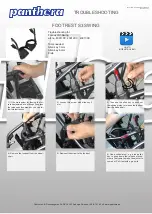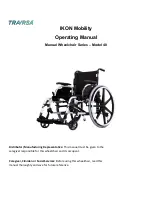
27
28
6.4.5 Adjusting the braking force of the drum brake
INFORMATION
After making adjustments, check that activating the manual brake lever creates a sufficient braking effect.
Note that the drum brake must still be able to produce sufficient braking force even when the manual brake lever
is locked into a ratchet position.
To achieve an optimum braking effect, the braking force is adjusted using the adjustment screw (see fig. 29, item
2).
•
Increase the braking force:
Back off the adjusting screw.
•
Reduce the braking force:
Screw in the adjustment screw.
1) Loosen the counter nut (see fig. 29, item 1) and back off the adjustment screw until a scraping noise can be
heard when the rear wheel is rotated.
2) Screw in the adjustment screw (see fig. 29, item 2) until the scraping noise at the rear wheel disappears and
the wheel runs freely.
3) Tighten the counter nut (see fig. 29, item 1) until the adjustment screw is fixed.
→
The braking force of both rear wheels must be adjusted equally.
29
6.5 Adjusting the back support
6.5.1 Adjusting the back support height
Depending on the back support system, the back support height can be adjusted by
25 mm
,
50 mm
or
75 mm
.
The back support tube integrated into the rear frame allows the back support height to be adjusted in increments of
25 mm
.
1) Remove the back support pad (see fig. 30).
2)
If necessary:
Loosen the rear side panel mounting on the frame (see fig. 31, item 1) and fold away the side
panel.
3) Remove the two back support tube mounting screws from the rear frame (see fig. 32, item 1).
4) Set the desired back support height by shifting the back support tube.
INFORMATION: The back support can be moved upward only as far that the two mounting screws (see
fig. 32, item 1) can still be screwed into the back support tube.
18
Settings
Motus CV, Motus CS
















































